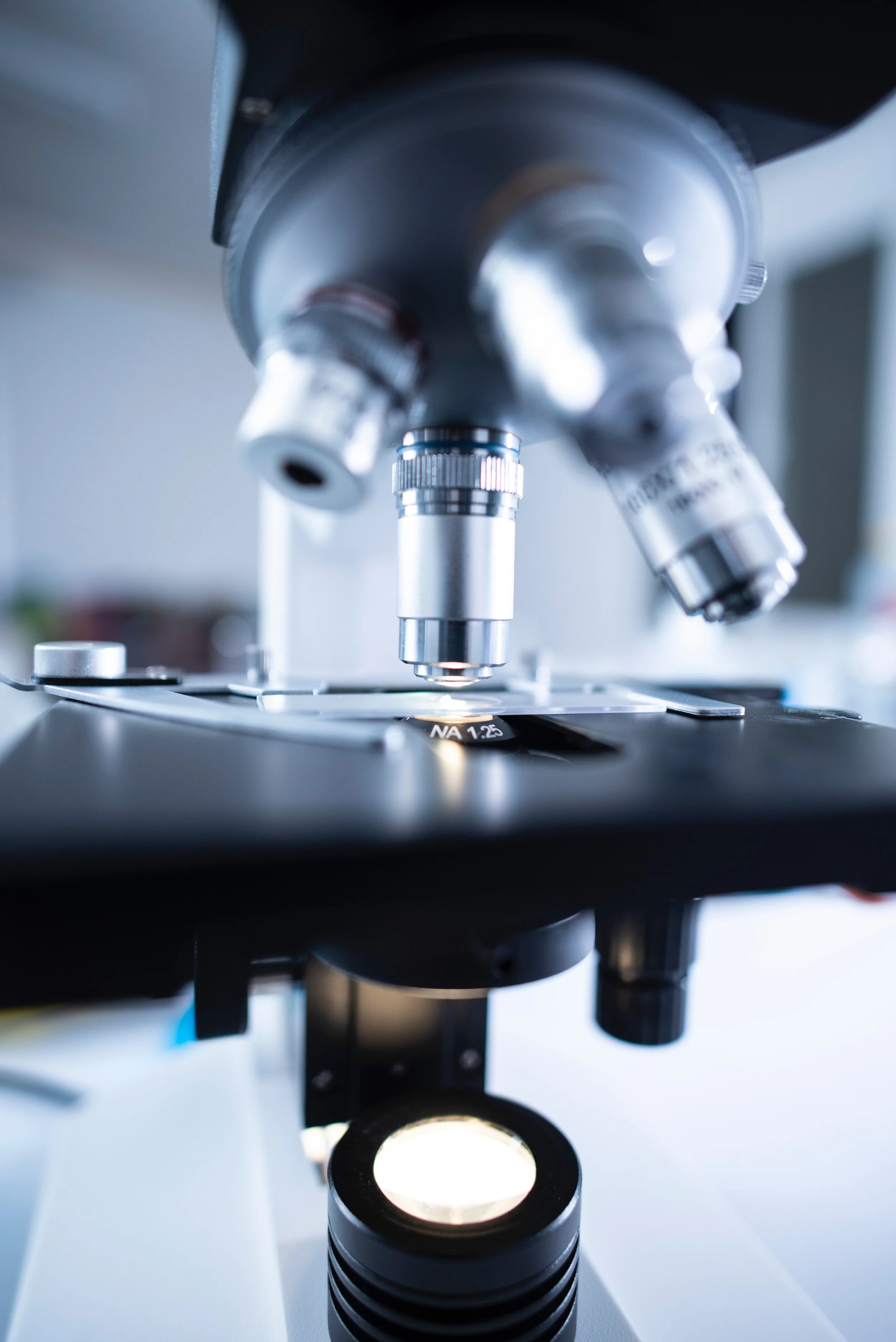Rising infertility and an operation to delay the menopause
Professor Simon Fishel is IVF royalty. He’ll never tell you that - because he’s far too modest. But the multi-award-winning, pioneering scientist and fertility specialist’s reputation reaches far and wide.
He is responsible for more than 30,000 babies, has published over 200 clinical papers and edited four books.
Simon was accused of doing “the work of the devil” with IVF in its early days
When the world’s first in vitro fertilisation (IVF) clinic - Bourn Hall in Cambridgeshire - was set up in 1980, Simon was part of the original team carrying out a revolutionary new technique of fertilising human eggs with sperm in a laboratory before placing the embryo in a woman’s womb to develop.
They were continuing the success achieved by Professor Sir Robert Edwards, Dr Patrick Steptoe and embryologist Jean Purdy two years earlier, when they effectively created the first ‘test-tube baby’. That baby was Louise Brown. Later, Simon became responsible for the in vitro fertilisation of Natalie Brown – Louise’s sister.
I asked Simon what the wider social reaction to his team’s work had been at the time.
“From horror to abject rejection of the principle and the practise,” he told me in healthHackers® episode 40.
“It was unbelievable how few people were supportive.”
Many in the scientific community had been against IVF. Simon was told by one senior figure he would “ruin” his future and that he was doing “the work of the devil.”
“We published a scientific paper in 1984 which resulted in Bob Edwards and I having a writ for murder against us because we had human embryos growing in a dish which didn’t survive,” he said.
Archives show that the National Health Service (NHS) also repeatedly declined to support IVF.
Despite the scientific progress in IVF over the past 40 years, Simon insisted the real pioneers were the first patients. “What did they have to go on? They had society against them and a few of us who believed we could help.”
“There was so much we didn’t know,” he told me, explaining that the technology was so different to today’s that even if you put his 1980s IVF lab into a museum now - “you’d laugh,” he said.
“We hardly knew male infertility existed at all. We were utterly gobsmacked when we put sperm and eggs together from a man who had a fantastic sperm count… to see those sperm couldn’t fertilise an egg.”
In early 2019, Simon wrote in the Daily Mail that he estimated “at least 40–50 per cent of infertility cases are caused by problems with the sperm.”
He told me it was the early discovery about sperm and male infertility that led him to develop sperm micro-injection technology.
Following his days at Bourn Hall, Simon continued to dedicate his career to helping people become parents.
Simon said the new procedure to delay the menopause could actually be seen as “natural HRT”
He founded CARE Fertility - a leading network of IVF centres in the UK, and is the CEO of ProFaM - a company that recently made headlines after launching a medical procedure that could delay the menopause by 20 years using ovarian tissue cryopreservation.
The surgery involves removing a small amount of healthy ovarian tissue from a woman under 37-years-old and freezing it until she wants to boost her hormone levels in the future when they will be naturally declining with age.
When that time comes, the tissue can be inserted back into her body, restoring her hormone levels to those of her younger self - complete with her monthly periods.
The operation is an option for women who don’t want to suffer the negative side effects of the menopause for so many decades, but it has come under criticism for its experimental nature.
The procedure to delay the menopause, offered by ProFaM for upwards of £6,000, could prolong fertility in a woman too
A common treatment for menopausal symptoms is currently hormone replacement therapy (HRT). Simon said the new procedure could actually be seen as “natural HRT” - given that a woman will, in theory, be replacing her own hormones following tissue re-implantation.
However, Simon is candid about the fact that no one (including him) can know if the operation will be of any real benefit to women undergoing the procedure for around another 30 years.
“But we believe it could be,” he told me.
“If we don’t start this now, there’ll be another generation of women that can’t have at least a conversation, can’t potentially consider the opportunity, and maybe it will never be there if we keep delaying it.”
More than 30,000 babies have been conceived through IVF at clinics founded by Professor Simon Fishel
“We have to be realistic and therefore we have to try to have strategies that help people plan for their lives.”
Simon compared the reaction to his new procedure to that of the outcry he experienced when he and his contemporaries were forging ahead with IVF against the odds in the 1980s.
“You’ve just got to be bold and brave at times.”
According to Simon, “the most difficult barrier to conception is the age of the woman”
He told me that if he and his colleagues hadn’t persisted with their IVF work, “there would be 14 million parents today who would not be parents.”
The procedure to delay the menopause, offered by ProFaM for upwards of £6,000, could prolong fertility in a woman too - a potential double benefit.
“A lot of women now are trying to consider egg freezing but I believe that ovarian tissue freezing will overtake egg freezing eventually,” he told me.
According to Simon, “the most difficult barrier to conception is the age of the woman.” It’s because the quality of the eggs in a female’s ovaries “decline from about 35 onwards,” he said.
Given that fertility is increasing (not just among women), I asked if he had any theories as to why.
There’s the issue of women having children later in life, which Simon said is leading to a rise in secondary infertility too - a term used to describe infertility after previously having had a baby.
He also cited lifestyle and environmental factors.
“We need to get to grips with our polluted, toxic world and I don’t know how we do that but it is causing fertility issues - both in men and in women.”
He didn’t just mean city smog and diesel fumes. Chemicals in our cosmetics, pesticides in our food, and inadvertently consuming microplastic particles, as well as smoking could all have a negative impact, he explained.
“Not enough is done, I think, to look at how polluted our individual bodies are,” he told me.
You can hear more about Simon’s reasons for the rise of infertility in healthHackers® episode 40.
Simon also set up the Rachel Foundation, a charity for research into improving treatment and supporting those struggling to get pregnant because of previous medical procedures.
Looking back on his career so far, I asked what it felt like to be responsible for the conceptions of over 30,000 babies through the fertility work carried out at his clinics.
Simon described it as “humbling,” adding: “What is better than being able to produce a human child for somebody who wants one?”.
“I’ve been blessed to be in this career,” he said.
Follow Simon on Twitter.
See details of ProFaM.
Find out about CARE Fertility.






